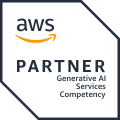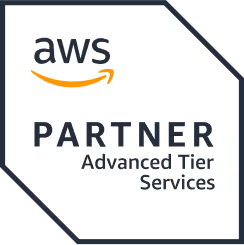Automation Unleashed: Insights from The Product Folks Meetup
TL'DR
- No-code automation is emerging as a critical capability for modern product teams.
- At The Product Folks Meetup hosted by Ideas2IT, attendees explored how n8n empowers product managers and non-technical teams to automate workflows, connect tools, and accelerate product delivery without heavy engineering lift.
- The session, led by Aishwarya Jaiswal from Microsoft, combined strategic guidance with live demos of real-world automation use cases, covering feedback pipelines, release management, and cross-tool data syncing.
- This blog unpacks the key shifts in product operations, technical takeaways, and adoption strategies that product leaders can apply right now.
No-Code Automation:
In 2025, competitive product teams are increasingly defined by their ability to orchestrate systems without engineering bottlenecks. With tool ecosystems growing more fragmented and operational complexity rising, no-code platforms like n8n are an operational necessity.
At The Product Folks Meetup at Ideas2IT HQ, over 50 product managers, developers, and community leaders came together to answer a critical question: How can product teams use no-code tools like n8n to operate with engineering-grade efficiency without diverting developer bandwidth?
The answer lay in practical, integration-first automation that empowers teams to move from manual processes to intelligent, self-sustaining workflows.
Evolving Priorities for Product Leaders in the Automation Era
In her keynote and live demos, Aishwarya Jaiswal outlined three strategic imperatives for leaders integrating no-code automation:
- Democratize workflow creation – Empower product managers, designers, and ops specialists to create automations without code.
- Integrate across the product stack – Link communication tools, PM platforms, analytics systems, and repositories into unified workflows.
- Govern at scale – Apply security, version control, and access policies to ensure enterprise-grade automation reliability
“Automation is about freeing people to focus on the high-leverage work that moves the product forward.”
— Aishwarya Jaiswal
Quantifiable Benefits of n8n for Product Teams
The session featured hands-on exercises and real-world demos that illustrated measurable gains:
- Customer Feedback Pipeline – Multi-channel feedback capture routed directly into PM tools, cutting manual collation time to near zero.
- Release Management Automation – End-to-end notifications from code commit to stakeholder update and deployment tracking.
- Data Sync & Reporting – Automatic consolidation of metrics from multiple sources into live dashboards.
Gartner projects that by 2026, 70% of product-led organizations will adopt no-code automation platforms, reducing operational overhead by at least 25%.
Integrating n8n into Product Workflows
Rather than replacing established processes, n8n was positioned as an augmentation layer, designed to work alongside existing tools and workflows.
Adoption strategies discussed included:
- Targeting repetitive, high-volume tasks that drain PM time.
- Building integration-first workflows that connect across the toolchain.
- Using versioned workflow libraries to promote reusability and consistency across teams.
The Ideas2IT team, led by Bavithra Duraisamy, hosted the event and shared their own HR workflow automation as an example of operational efficiency gains. Balaji Parimelazhagan and Venkatesh T.M. provided on-the-spot technical support, helping participants resolve their doubts during the workshop.
Three Leadership Priorities for No-Code Adoption
For leaders aiming to operationalize no-code automation in 2025:
- Upskill teams for automation literacy – Familiarity with workflow builders, APIs, and data flows will soon be a baseline PM skill.
- Prioritize integration architecture – Build workflows that serve as connective tissue for the product ecosystem.
- Embed governance early – Define ownership, change approval, and security protocols before scaling automation.
Lessons from the Hands-On Workshop
Participants created a user onboarding automation, explored live API integrations, and implemented error-handling patterns to make workflows production-ready.
Peer discussions revealed common adoption insights:
- Start with processes that have measurable ROI.
- Share workflow templates to accelerate cross-team adoption.
- Monitor and refine workflows based on real usage data.
The collaborative setup encouraged sharing of automation challenges, from data transformation pain points to cross-platform triggers, and sparked peer-to-peer problem solving.
The most common takeaway: Start small, automate what slows you down daily, and scale from there.
Positioning Automation as a Core Product Competency
The Chennai meetup reinforced that automation literacy is now part of product management excellence.
Teams that embrace no-code tools like n8n can ship faster, with less friction, and more focus on strategic product decisions. But automation at scale requires deliberate adoption, shared literacy, and governance.
The leaders who invest in these pillars will redefine operational velocity for their organizations.
About the Author
Aishwarya Jaiswal is a Product Manager at Microsoft, building DevTools for secure, resilient infrastructure deployments at scale in Azure. With over 6 years at Microsoft and prior consulting experience, she has led automation-driven efficiency initiatives, including an AI-powered Copilot chatbot that reduced query volume by 50% and saved engineering teams a full day of on-call effort each week.
Event hosted by: The Product Folks team – Dinesh Kumar Prabakaran, L. Sudharsan, Sudharsan Moorthy
Hosted at: Ideas2IT HQ, Chennai – with event facilitation by Bavithra Duraisamy, technical support by Balaji Parimelazhagan and Venkatesh T.M.
To explore more events from The Product Folks, visit the meetup page here.Interested in collaborating on future events or sharing your expertise? Follow Ideas2IT on LinkedIn and send us a DM.







.png)
.png)
.avif)















